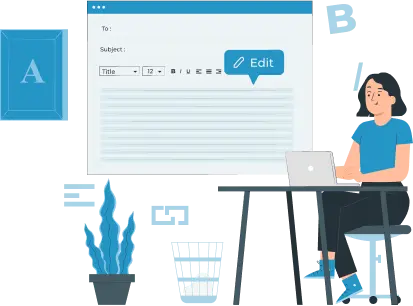You send us your project and we scope it out to get a feel for the start text, establish turnaround time, understand the target language, create a glossary, analyze the format, and more.
Who we are
The Most Sought-After Language Translation Company
CCJK is a frontrunner in professional translation services. With the commitment to helping businesses transcend borders and cultures, our translation services company has exceeded client expectations for more than 20 years. Having a global network of experienced native linguists, we adapt your brand voice to any target culture and help you become as successful abroad as you are in the home market.

0+
Years of Experience

0K+
Projects Delivered Last Year

0K
Native Translators

0+
Languages

0M+
words translated Last Year
Industry expertise
Best Translation Agency For All Industries
As a top language translation agency, we serve clients across all domains. Our strength lies in having industry-specific linguists who easily get across technical jargon and make appropriate use of relevant terminologies. Entrust your project to us and our specialized experts will provide you with the best translation services tailored to your specific content type and business requirements.
Global talent pool
Translation Agency with 30,000+ Linguists
We’ve 30,000+ professional translators on our team. Situated all around the globe, they bring an acute awareness of the cultural norms and language nuances in their target regions. That’s what enables them to deliver translation services of native quality, always.
The CCJK difference
Why companies tap us
Happy clients
95% of our clients recommend us for a reason!
Industry knowledge
Our team comprises specialists in every industry.
Competitive pricing
Our price point is as competitive as it can be.

Quality guarantee
We ensure our translations satisfy your needs.
230 global languages
We transform your content in 230 languages.
Quick delivery
We strive to deliver the fastest possible turnaround.
Method to magic
Our 3-Step Translation Process
Our professional translation company follows a well-established and robust translation process to solve any challenges that come our way.
Planning & Preparation
1
Translation & Editing
2
Your project gets underway. Only specialized translators are assigned. To achieve optimum results, the translation is produced, edited, and proofread by two skilled professionals.
Quality Assurance & Certification
3
We manage all aspects in such a way that yields a high-quality deliverable at your disposal. We guarantee no errors or inconsistencies in the translation and provide certification if necessary.
Service reviews
See how our clients rate us
I will use CCJK in the future and I would definitely recommend them to anyone looking for language translation services.
Kim Clark
Marketing Manager, EnBIOI appreciate all your hard work on this. We will definitely use your company again in the future.
Karen
Your service was excellent. I had native language speakers review the finished content and they informed me the quality was excellent. I will definitely be using your service in the future.
Peter
The first proofs were the final documents. We had no changes. This is our 2nd time using this vendor and we will use again. Thanks!
Sherry
Manager Marketing Dept.We are extremely happy that it was such a quick translation, as well your quick response at all moments! Great Service. We will for sure be using your services in future. Thank you!
Aida Majzoub
Executive AssistantYour service is great and we are very happy to work with you. We will send you in the next time some new work.
Julia Marte
Great experience all around. Very good work and service. I would highly recommend them.
Rick Wong
The Dohring Company & MarketSurveysThank you so much (and also to the translators). It’s been such a pleasure working with CCJK. I will definitely recommend it to anyone that would require translation services.
Sandi Thouvenin Phillips
Special Assistant, Department of Psychological SciencesLanguage support
We Translate Into 230 Languages
CCJK is a professional translation agency that operates in 230 languages. From English to Japanese, Arabic to Cajun, Filipino to Portuguese, and many more - we’ve got the entire globe covered.













